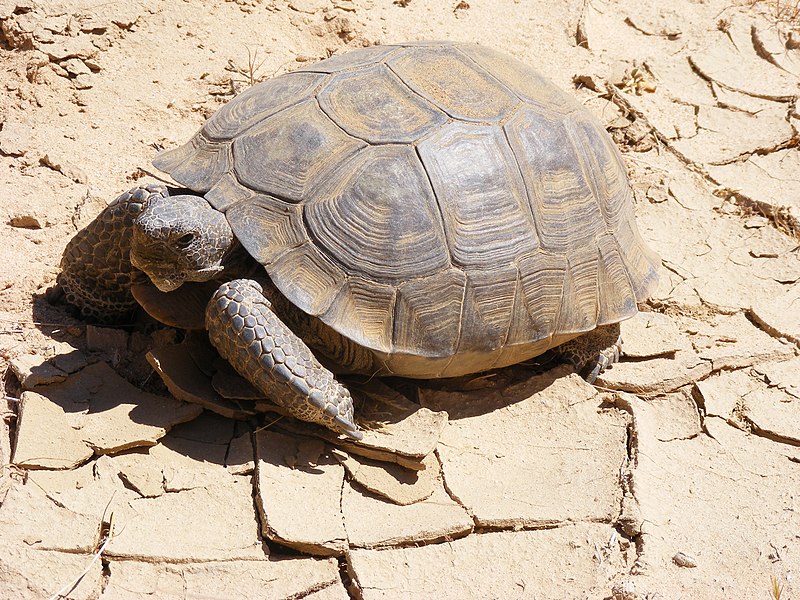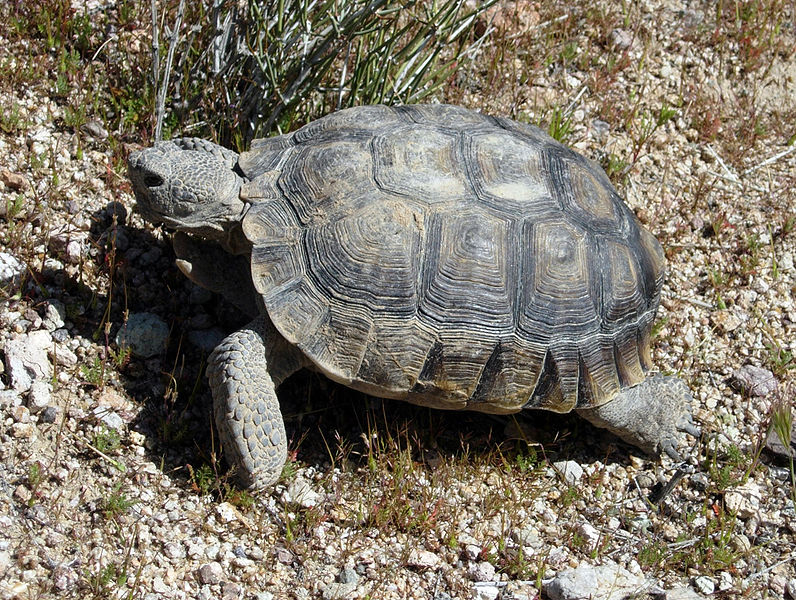 The desert tortoise was at one time collected in huge numbers for the pet trade. Unfortunately, most were not properly cared for, and survival rates were abysmal. This, combined with massive habitat loss in the American Southwest, led all states within its range to adopt protective legislation, and to its listing with CITES and the IUCN.
The desert tortoise was at one time collected in huge numbers for the pet trade. Unfortunately, most were not properly cared for, and survival rates were abysmal. This, combined with massive habitat loss in the American Southwest, led all states within its range to adopt protective legislation, and to its listing with CITES and the IUCN.
Unwittingly Introducing Pathogens
Many people cooperated – releasing their pets or, through various organizations, rehabilitating injured tortoises and then turning them loose. Unfortunately, a respiratory disease commonly afflicting captive tortoises took hold among wild populations, and more harm than good resulted from the rescue and release efforts.
Incomplete Habitat Protection
On a grander scale, the habitat protection granted the tortoises often failed to take into account a unique twist in the species’ life history. In the northern portion of their range, desert tortoises migrate to hilly areas at the onset of cold weather and hibernate in communal burrows that are 15-35 feet in length. These long-established burrows are essential to winter survival, as a burrow of suitable length (15+ feet) cannot be constructed by a single tortoise in one season.
Setting aside areas where the tortoises were observed to forage and nest was an admirable step, but ultimately fell short of what northern populations required. The hibernation sites, often far-removed from foraging areas, were not always taken into consideration.
Both problems have largely been rectified, but only at the cost of lives and time. The key point to be taken here is that we must all read, exchange information and observe…either of the above might have been identified by anyone who looked closely enough – pet keeper or field biologist alike.
A California Department of Fish and Game report on the desert tortoise’s natural history is posted at:
http://www.google.com/search?hl=en&lr=&as_qdr=all&sa=X&oi=spell&resnum=0&ct=result&cd=1&q=gopherus+agassizi+natural+habitat&spell=1
Image referenced from Wikipedia Commons

 That Reptile Blog – Reptile, Amphibian and Exotic Pet Care and Information
That Reptile Blog – Reptile, Amphibian and Exotic Pet Care and Information

 The desert tortoise was at one time collected in huge numbers for the pet trade. Unfortunately, most were not properly cared for, and survival rates were abysmal. This, combined with massive habitat loss in the American Southwest, led all states within its range to adopt protective legislation, and to its listing with CITES and the IUCN.
The desert tortoise was at one time collected in huge numbers for the pet trade. Unfortunately, most were not properly cared for, and survival rates were abysmal. This, combined with massive habitat loss in the American Southwest, led all states within its range to adopt protective legislation, and to its listing with CITES and the IUCN.